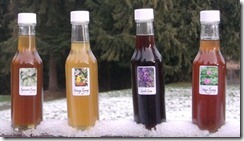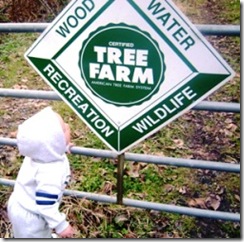
This morning, while juggling the usual busy-ness of business, I took time see what I could add to the important effort being put forth by the indie personal care products industry to try to avert the potential disaster known as the H.R. 5786 Safe Cosmetics Act 2010, aggressively, if misguidedly, championed by the Campaign for Safe Cosmetics and others. I read the latest earnest and heartfelt blog posts from my colleagues, knowing that they too could be spending their time more productively and enjoyably than having to deal with this nonsense. And, it is non-sense in the strictest definition, when you peel the layers to examine in more detail. To bring you up to date with what my fellow indies are saying, this succinct recap with a sampling of quotes and links to indie opinions on Essential U will be helpful to get you up to speed if you are not already familiar with the Opposition to this flawed bill that could result in grave unintended consequences for the indie personal care products community.
I was pleased to see that Annie Leonard’s (CFSC’s latest partner in fear mongering) disgraceful Story of Cosmetics was outstandingly critiqued by Lee Doren, author of How the World Works, a 2009 IPPY award winning book. How Annie can continue to drink the CFSC Kool-Aid is really amazing after this scathing well researched and factually accurate indictment.
I then girded my loins to read the latest propaganda on Campaign for Safe Cosmetics itself, knowing that I would find either delusion or untruth, and most probably both. I wasn’t disappointed. So filled with vagaries, blatant spin and misstatement, where do I start? The latest missile on the CFSC website is entitled, The Safe Cosmetics Act of 2010: What It Means for Cosmetics Companies. It is, no doubt, their attempt to challenge those of us opposing the SCA.
Under the sub-header, “How will the Safe Cosmetics Act of 2010 impact small businesses?”
”The Campaign for Safe Cosmetics strongly supports small businesses and we have always been major advocates for elevating the work and values of the independent businesses that are the driving force of innovation toward health and safety in the personal care products industry.”
Gee, that definition fits my business, as well as many of my colleagues standing up against the SCA, yet why do we feel the CFSC is working against our interests, and not the “major advocate” they claim to be? Most of us were early signers to the Compact, why do we now distance ourselves?
“We are fully committed to working together with companies in our Compact for Safe Cosmetics community and others to ensure that the Safe Cosmetics Act of 2010 does not unfairly burden small businesses that are already committed to making the safest products possible.”
Now, this is just flat untrue. CFSC has never “worked with” their company signers in the true sense of the phrase. In my experience as a signer for several years, theirs was a top-down agenda. I was never solicited for advice, comment or approval. There was no “partnership” as implied above. There was never a visible desire for or effort towards consensus from all stakeholders. Scrutiny from those of us in the indie personal care products industry has revealed that many, if not most, of the signers in the SFSC “community” are very small businesses most likely blissfully unaware of the potential harm that could come to them as a result of passing the Safe Cosmetics Act 2010 and its unintended consequences. Or, because these small company signers have experienced non-responsiveness and non-support from CFSC (with regard to this and other legislative issues, and grossly inaccurate toxicity claims), some companies have requested to have their company name removed and CFSC has not honored their requests. My beloved nerdy husband and partner, Rob, did a short analysis back in 2008 when we requested to be removed. He found an approximate attrition rate of 33% of the then 733 total Compact signers. A random sampling of those companies removed found 65% of them still in business, indicating that there were voluntary requests for removal by the companies themselves for one reason or another. Hmm, I wonder how robust this list of companies would look now with all who have since requested their names removed or CFSC actual compliance with earlier requests from those companies still listed. Or those with links to nowhere (intimating that the company is probably out of business) removed and the list currently updated. Those of us who have successfully had our company name removed report that it took repeated contact and demand over a long period of time, from 6 months to over a year or more! Does this sound to you like CFSC is “fully committed to working together”? Or are those unsuspecting companies just pawns in a larger agenda? If you are a signer, please add your personal comments below.
“There is a lot of misinformation circulating about the Safe Cosmetics Act of 2010 that it will "kill small businesses." This couldn’t be further from the truth and is an unfortunate misrepresentation of the facts.
Where is the substance in this statement? Do they actually ever cite or reference specific misinformation being promulgated out here to back these vague attacks? Anything with some factual teeth? No. We in the indie community have found and have accurately corrected gross misrepresentation of the facts by CFSC, most especially the unsubstantiated scientific facts on which they base their agenda, until we are blue in the face. However, they continue to ignore our reasonable and factual objections and continue to up the adversarial ante, seemingly incapable of introspection or, most importantly, the desire to ascertain the real facts upon which any effective legislation must be based. Our protests fall on dead ears. This is how they show “strong support” of and “elevate the work and values of the independent businesses that are the driving force of innovation toward health and safety in the personal care products industry.” If you are new to this issue, please refer back to the synopsis of blog posts here for background, support and veracity of my statements here.
CFSC goes on to present further distortion of the language in the bill.
“ The Safe Cosmetics Act of 2010 contains specific provisions to protect and help small businesses, including:
- Fee exemptions for small businesses with less than $1 million in annual sales.
- Data sharing and transparency: small businesses will benefit by having access to safety assessments conducted by other cosmetics companies and suppliers that are currently kept private, and it will open up the information flow so all companies have easier access to the information that will help them make the best decisions about product safety.
- "Producer right-to-know" provisions that will enable cosmetics companies to get full information from suppliers about toxicological data and safety information for cosmetic ingredients, including the chemicals in fragrance and preservatives.”
Looks like a Pollyanna picture of goodness and transparency, right? They don’t tell you that registration fees IS the only burden that small business is possibly exempted from if this bill were to become law. That small business is not exempted from having the burden of reporting relatively useless ingredient minutia (sometimes trace ppm), as well as safety data for that minutia – some of which has already been researched and established by the FDA (or published by other scientific researchers) for the most part. Data sharing? Do you honestly believe that Johnson & Johnson or Estee Lauder are going to open their research database to every mom and pop soap company or indie personal care products manufacturer? You can only guess how many lawyers will get richer as a a result of this inclusion, if it actually exists in the final law. “Producer right-to-know” provisions? This part of the bill is undoubtedly aimed at the plethora of synthetic chemical producers who concoct “better living through chemistry”, manufacturing some of those long names that Annie Leonard and CFSC scare you with. Frankly, some of them scare me, too, but I am also educated enough to know that not all chemical innovation is bad for you. It is here that the sensible indie movement towards naturals meets the giants of the cosmetic industry on shared opinion.
Here is but one example of possible far-reaching and damaging unintended consequences under this “Producer right-to-know” requirements of the SCA.
We at Samara Botane purchase some essential oils from small cooperative or family distillers around the world. These are small to mid-sized producers, often family owned, who have been growing or wildcrafting aromatic plants for generations for aromatic distillation to obtain essential oils. We were introduced to these small producers in the late 80’s and early 90’s at myriad gatherings during the explosion of new aromatic plant research, emerging aromatherapy schools and conferences around the globe to share scientific research based on the chemistry of essential oils and to explore the indigenous cultural use more in depth by those of us in the West. These producers are not always expert at identifying the exact chemical constituents of their products, although many are much more expert now than when we first started importing. They provide the required MSDS, CAS and other legally required information for identification for international commerce, but their expertise is not always in the end “use” of their product. Nor should it be; we look them for their artistry and years of experience in the sustainable management of the crops themselves and the proper distillation for a quality essential oil. It is up to us, the importers, and aromatherapy experts to ethically test and analyze further research for the many safe uses. Many of these essential oils are already classed as G.R.A.S. (Generally Regarded as Safe) and are used in the food and flavor industry as well as natural skincare and personal products. You can only come to the reasonable conclusion here that unintended consequences would possibly adversely affect these small producers across the globe.
The very fact that we emerging indies exist and have been researching, developing and providing alternative, safer personal care, as well as more in-depth consumer information is a primary reason that the “biggies” are slowly moving in the direction of more natural ingredients, which we indies believe are safer. Sure, it’s a behemoth and cumbersome industry, and there is “greenwashing”, but hey, there is also progress towards more safe and sustainable ingredients. Without the continued good work of the indies who started the “green” revolution in personal care products, will the biggies still feel a need to manufacture better, more natural products if we aren’t there to prod and innovate them, especially if they contain natural ingredients more costly than some of their synthetic chemical counterparts? Since the primary mission of most big corporations is to make a profit, what do you think?
Our primary business is supplying essential oils – on our retail website, to massage and aromatherapy schools and other professional institutions, hospitals and clinics, and to small personal products manufacturers. All could be adversely affected if the SCA bill becomes law, increasing the domino effect of unintended consequences.
If you purchase personal care products, or supplies from small, independent personal product companies and ingredients suppliers, please heed our voices of reason. Read the Oppose SCA petition here and , please sign. You will see that I am not alone, we are now approaching 2,140 signatures as I prepare to launch this missile into cyberspace. We need many more of you to speak up on our mutual behalf.
 Thanks for listening and thanks for your support.
Thanks for listening and thanks for your support.
Marcia (Rant Girl)
 My reflection on Earth Day last year wasn’t very rosy. I’m not sure I have great news now that another one has rolled around. This year, with the passing of Representative Paul Ryan’s 2012 Republican Budget Plan in the House of Representatives, clearly that side of the aisle is bent on slowing any progress towards addressing the coming calamity of climate change and protecting the environment. The bill includes a huge cut ($1.6 billion) in the Environmental Protection Agency budget and hits the Energy Department hard with harsh cuts to energy efficiency and renewable energy programs and doesn’t touch the approximate $4 billion in subsidies to oil and gas companies – the most profitable companies in the world. I think this is wrong-headed.
My reflection on Earth Day last year wasn’t very rosy. I’m not sure I have great news now that another one has rolled around. This year, with the passing of Representative Paul Ryan’s 2012 Republican Budget Plan in the House of Representatives, clearly that side of the aisle is bent on slowing any progress towards addressing the coming calamity of climate change and protecting the environment. The bill includes a huge cut ($1.6 billion) in the Environmental Protection Agency budget and hits the Energy Department hard with harsh cuts to energy efficiency and renewable energy programs and doesn’t touch the approximate $4 billion in subsidies to oil and gas companies – the most profitable companies in the world. I think this is wrong-headed. Earth Day Network has a plethora of activities, videos, campaigns and important information throughout the year.
Earth Day Network has a plethora of activities, videos, campaigns and important information throughout the year.











 changes and challenges. Here in the Cascade foothills in Snohomish county, WA, we are noticing a trend of colder winters and more often several feet of snow when we used to rarely get inches if any at all. Early Spring is wetter and floods now happen earlier in the year and longer in duration and intensity. Wind storms are more prevalent and there are more downed trees to deal with. And, it’s hotter in the summer months, making it imperative to pay closer attention to the garden plants to insure they are well watered, mulched/composted and sometimes shaded from the sun’s intensity. We continue the discussion with more ideas to create the optimum circumstances for success in the garden.
changes and challenges. Here in the Cascade foothills in Snohomish county, WA, we are noticing a trend of colder winters and more often several feet of snow when we used to rarely get inches if any at all. Early Spring is wetter and floods now happen earlier in the year and longer in duration and intensity. Wind storms are more prevalent and there are more downed trees to deal with. And, it’s hotter in the summer months, making it imperative to pay closer attention to the garden plants to insure they are well watered, mulched/composted and sometimes shaded from the sun’s intensity. We continue the discussion with more ideas to create the optimum circumstances for success in the garden.
